 |
King of Chemicals Manufacturers |
Specifications, Properties, Uses, SDS of Cellulose Acetate USP NF BP Ph Eur EP Grade Manufacturer Supplier Exporter Wholesale & Small Packs, CAS Number 9004-35-7 or 9035-69-2 or 9012-09-3. |
|
| King of Chemicals has several associated companies having accreditations like cGMP, GLP - FDA Approved Good Manufacturing Practice and Good Laboratory Practice of WHO standard, ISO-9001, ISO-14001, ISO/IEC 17025, ISO ISO-45000, HACCP, FSSC 220000, FSSAI, "REACH" Registered, Kosher & Halal Certified. e-CTD and DMF support can be made available if needed. We offer USP NF BP Ph Eur EP IP JP Analytical Reagent FCC Food Grade Chemicals & Nutraceuticals. | |
        |
|
Muby Chem Pvt. Ltd. is a several decades old group of companies, engaged in manufacturing, supplying, distributing, wholesale supplies of Cellulose Acetate USP NF BP Ph Eur EP Grade for actual users, including retail or small pack supplies for research and development work.
We supply fine and speciality chemicals, pharmaceutical excipients, mineral fortifiers in chemically pure, analytical reagent grade, IP BP USP Ph Eur EP JP and other pharmaceutical grade monograph including FCC Food grade chemicals and Nutraceuticals at best prices. We and/or our associated units have all the facilities to supply as per cGMP standard observing good manufacturing practice and good laboratory practice. We can assure low microbial count and also offer a test certificate for the same. We maintain warehouses across USA, India, and UAE. Our group exports to USA, Canada, Mexico, Argentina, Brazil, Chile, Korea, Malaysia, Thailand, Indonesia, Europe, and several other parts of the world. We supply in wholesale container loads to small pack of few grams. Solid products may be specified for it size and shape as desired by the buyer.


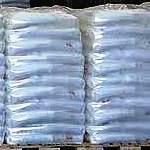
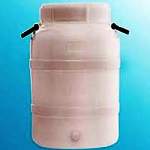
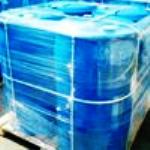
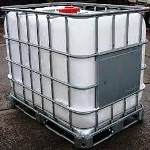
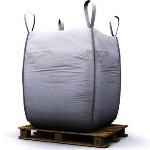
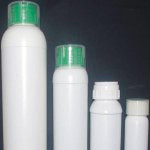
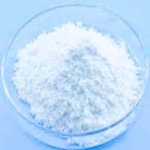
Cellulose Acetate CAS Number 9004-35-7 or 9035-69-2 or 9012-09-3
For Properties Specifications Uses of Cellulose Acetate Click Properties, Specifications, Uses, Price, Process of Cellulose Acetate Manufacturer.
For For SDS MSDS Sheet of Cellulose Acetate Click SDS Safety Data Sheet MSDS Sheet of Cellulose Acetate Manufacturer.
The Properties, Specifications, Monograph and Uses of Cellulose Acetate:
Cellulose Acetate BP Ph Eur Grade Specifications
Ph Eur
Action and use: Excipient.
DEFINITION
Partly or completely O-acetylated cellulose.
Content: 29.0 per cent to 44.8 per cent of acetyl groups (C2H3O) (dried substance) and 90.0 per cent to 110.0 per cent of the acetyl content stated on the label (dried substance).
CHARACTERS
Appearance: White, yellowish-white or greyish-white powder or granules, hygroscopic.
Solubility: Practically insoluble in water, soluble in acetone, in formic acid and in a mixture of equal volumes of methanol and methylene chloride, practically insoluble in alcohol.
IDENTIFICATION
Infrared absorption spectrophotometry.
TESTS
Free acid: Maximum 0.1 per cent, calculated as acetic acid (dried substance).
To 5.00 g in a 250 ml conical flask, add 150 ml of carbon dioxide-free water, insert the stopper, swirl the suspension gently and allow to stand for 3 h. Filter, wash the flask and the filter with carbon dioxide-free water. Combine the filtrate and washings. Add 0.1 ml of PhPh solution. Titrate with 0.01 M sodium hydroxide until a faint pink colour is obtained.
1 ml of 0.01 M sodium hydroxide is equivalent to 0.6005 mg of free acid, calculated as acetic acid.
Heavy metals: Maximum 10 ppm.
2.0 g complies with limit test D. Prepare the standard using 2 ml of lead standard solution (10 ppm Pb) R.
Loss on drying: Maximum 5.0 per cent, determined on 1.000 g by drying in an oven at 105C for 3 h.
Sulphated ash: Maximum 0.1 per cent, determined on 1.0 g.
Microbial contamination: Total viable aerobic count not more than 1000 micro-organisms per gram of which not more than 100 fungi per gram determined by plate count. It complies with the tests for Escherichia coli and Salmonella.
Cellulose Acetate USP NF Grade Specifications
Cellulose, diacetate CAS 9035-69-2
Cellulose, triacetate CAS 9012-09-3
Cellulose Acetate is partially or completely acetylated cellulose. It contains not less than 29.0 percent and not more than 44.8 percent, by weight, of acetyl (C2H3O) groups, calculated on the dried basis. Its acetyl content is not less than 90.0 percent and not more than 110.0 percent of that indicated on the label.
Labeling: The labeling states the nominal percentage content of acetyl.
Identification: Prepare a solution of Cellulose Acetate (1 in 10), previously dried, in dioxane. Spread 1 drop of the solution on a sodium chloride plate, place a second sodium chloride plate over it, and spread the specimen between the plates. Separate the plates, heat them both at 105C for 1 hour, and reassemble the dried plates: the IR absorption spectrum exhibits maxima only at the same wavelengths as that of a similar preparation of USP Cellulose Acetate RS, treated in the same manner.
Loss on drying: Dry it at 105C for 3 hours: it loses not more than 5.0% of its weight.
Residue on ignition: not more than 0.1%.
Heavy metals: 0.001%.
Free acid: Transfer about 5 g, accurately weighed, to a 250-mL flask. Add 150 mL of freshly boiled, cooled water, insert the stopper into the flask, swirl the suspension gently, and allow it to stand for 3 hours. Filter through paper, and wash the flask and the filter with water, adding these washings to the filtrate. Add PhPh, and titrate the combined filtrate and washings with 0.01 N sodium hydroxide. Calculate the percentage of free acid in the portion of Cellulose Acetate taken by the formula: 0.06005A/W in which A is the volume, in mL, of 0.01 N sodium hydroxide consumed; and W is the weight, in g, of the Cellulose Acetate taken, calculated on the dried basis. Not more than 0.1%, calculated as acetic acid, is found.
Content of acetyl:
FOR CELLULOSE ACETATE LABELED TO CONTAIN NOT MORE THAN 42.0% OF ACETYL GROUPS:
Transfer about 2 g, accurately weighed, to a 500-mL flask. Add 100 mL of acetone and 5 mL to 10 mL of water to the flask, insert the stopper into the flask, and stir with a magnetic stirrer until solution is complete. Add 30 mL, accurately measured, of 1.0 N sodium hydroxide to the solution, with constant stirring. A finely divided precipitate of regenerated cellulose, free from lumps, is obtained. Insert the stopper into the flask, and stir with a magnetic stirrer for 30 minutes. Add 100 mL of water that has been preheated to 80C, washing down the sides of the flask, stir for 2 minutes, and cool to room temperature. Titrate the excess sodium hydroxide solution with 1.0 N sulfuric acid to a PhPh endpoint. Treat a blank in the same manner. Calculate the percentage of acetyl in the portion of Cellulose Acetate taken by the formula: 4.305(B – A)/W in which B and A are the volumes, in mL, of 1.0 N sulfuric acid consumed by the blank and the Cellulose Acetate, respectively; and W is the weight, in g, of Cellulose Acetate taken, calculated on the dried basis.
FOR CELLULOSE ACETATE LABELED TO CONTAIN MORE THAN 42.0% OF ACETYL GROUPS:
Transfer about 2 g, accurately weighed, to a 500-mL conical flask. Add 30.0 mL of dimethyl sulfoxide and 100 mL of acetone, and stir for 16 hours with the aid of a magnetic stirrer. Pipet 30 mL of 1 N sodium hydroxide slowly into the flask, with constant stirring. Insert the stopper into the flask, and stir for 6 minutes. Allow to stand without stirring for 60 minutes. Resume stirring, and add 100 mL of water that has been preheated to 80C, washing down the sides of the flask. Stir for 2 minutes, and cool to room temperature. Add 4 to 5 drops of PhPh, and titrate the excess sodium hydroxide solution with 0.5 N hydrochloric acid. Add an accurately measured excess of about 0.5 mL of 0.5 N hydrochloric acid. Stir for 5 minutes. Allow to stand for 30 minutes. Titrate with 0.5 N sodium hydroxide to a persistent pink endpoint, using a magnetic stirrer for agitation. Calculate the net number of milliequivalents of sodium hydroxide consumed, and correct this value by use of the average of two blank determinations run concomitantly through the entire procedure. Calculate the percentage of acetyl in the portion of Cellulose Acetate taken by the formula: 4.305n/W in which n is the corrected value of the net number of milliequivalents of sodium hydroxide consumed; and W is the weight, in g, of Cellulose Acetate taken, calculated on the dried basis.
Cellulose Acetate is also available as per EP grade monograph.
The MSDS-SDS Hazard Statement of Cellulose Acetate:
Cellulose Acetate SDS GHS, Safety Data Sheet
MSDS Sheet, Material Safety Data Sheet 24-Mar-25
Section 1: Chemical Product and Company Identification
Product Name & Other Names: Cellulose Acetate or Acetylcellulose
CAS Number: 9004-35-7 or (9035-69-2 or 9012-09-3)
EINECS EC Code: -
Relevant uses and uses advised against (if any): Industrial Manufacturing.
Section 2: Hazards Identification
GHS, Globally Harmonized System Classification in accordance with 29 CFR 1910
Hazard Class and Category Code(s), Regulation (EC) No 1272/2008 (CLP)
Not a hazardous substance or mixture according to Regulation (EC) No. 1272/2008.
This substance is not classified as dangerous according to Directive 67/548/EEC.
Labeling Regulation as per GHS & EC 1272/2008 (CLP) & GHS
GHS Label Elements NONE |
Signal Word: None
Precautionary statements:
P261: Avoid breathing dust/fume/gas/mist/vapors/spray.
P262: Do not get in eyes, on skin, or on clothing.
P281: Use personal protective equipment as required.
P302+P352: IF ON SKIN: Wash with plenty of soap and water.
P304+P340: IF INHALED: Remove victim to fresh air and keep at rest in a position comfortable for breathing.
P305+P351+P338: IF IN EYES: Rinse cautiously with water for several minutes. Remove contact lenses, if present and easy to do. Continue rinsing.
P337+313: If eye irritation persists get medical advice/attention.
Section 3: Composition and Information on Ingredients
Product Name & Other Names: Cellulose Acetate or Acetylcellulose
CAS Number: 9004-35-7 or (9035-69-2 or 9012-09-3)
Section 4: First Aid Measures
Always seek medical advice after the first aid treatment.
Skin: Rinse with water. Soap may be used. Seek Medical Aid.
Eyes: Wash eyes with plenty of water for at least 15 minutes, lifting lids occasionally. Seek Medical Aid.
Inhalation: Remove to fresh air. If not breathing, give artificial respiration. If breathing is difficult, give oxygen.
Ingestion: If swallowed, induce vomiting immediately after giving two glasses of water. Never give anything by mouth to an unconscious person.
Section 5: Fire and Explosion Data
Products of Combustion: Oxides of Carbon.
Fire Fighting Media and Instructions: Use water spray, alcohol-resistant foam, dry chemical or carbon dioxide. Wear self-contained breathing apparatus for firefighting if necessary.
Section 6: Accidental Release Measures
Personal precautions, protective equipment and emergency procedures: Avoid breathing dust/fumes/gas/mist/vapors/spray. Ensure adequate ventilation. Use individual protective equipment (waterproof boots, suitable protective clothing, safety glasses, etc.). Restrict unprotected personnel from the area. Prevent any contact with hot surfaces. Do not approach facing the wind.
Environmental precautions: Do not let the product enter drains, soil or water sources.
Methods and materials used for containment Cleanup procedures and Storage: Contain spilled material. Do not inhale vapors, mist, or gas. Avoid dust formation. Use a shovel to put the material into a convenient waste disposal container.
Section 7: Handling and Storage
Precautions for safe handling: Apply according to good manufacturing and industrial hygiene practices. Ensure proper ventilation. Wash thoroughly after handling. Do not drink, eat or smoke while handling. Avoid contact with skin, eyes and clothing. Minimize dust generation. Avoid breathing dust/fumes/gas/mist/vapors/spray. Keep container tightly closed. Avoid ingestion and inhalation. Use individual protective equipment (waterproof boots, suitable protective clothing, safety glasses, etc.).
Conditions for safe storage, including any incompatibilities: Store in cool, dry and ventilated area away from heat sources and protected from sunlight in tightly closed original container. Keep air contact to a minimum. Do not leave the material container open. Store protected from heat, sparks and ignition sources and incompatible materials. Avoid inhalation of dust/mist/vapor. Do not store with incompatible materials like oxidizing agents, acids.
Section 8: Exposure Controls/Personal Protection
Exposure Guidelines: This product does not contain any hazardous materials with occupational exposure limits established by the region-specific regulatory bodies.
Engineering Controls: Use process enclosures, local exhaust ventilation, or other engineering controls to keep airborne levels low.
Personal Protection: Safety glasses. Lab coat. Dust respirator. Be sure to use an approved/certified respirator or equivalent Gloves.
Personal Protection in Case of a Large Spill: Splash goggles. Full suit. Dust respirator. Boots. Gloves. A self-contained breathing apparatus should be used to avoid inhalation of the product. Suggested protective clothing might not be enough; consult a specialist BEFORE handling this product.
Section 9: Physical and Chemical Properties
Appearance: Solid off-white to white crystals powder or granules.
Odor: None.
Odor threshold: Not applicable.
pH: No information found.
Relative density: 1.3
Melting point/freezing point: 260C
Initial boiling point and boiling range: No information found.
Flash point: No information found.
Auto-ignition temperature: No information found.
Decomposition temperature: No information found.
Upper/lower flammability or explosive limits: No information found.
Vapor pressure: No information found.
Vapor density: No information found.
Evaporation rate: No information found.
Flammability (solid, gas): No information found.
Partition coefficient: n-octanol/water: No information found.
Solubility: Slightly soluble in water.
Viscosity: No information found.
Section 10: Stability and Reactivity Data
Stability: It is stable in room temperature in closed containers under normal storage & handling.
Conditions of instability: Incompatible materials, Strong oxidizers.
Incompatibility with various substances: Avoid high temperatures, sparks, open flames and moisture. Avoid contact with strong oxidizing agents.
Polymerization: Will not occur.
Section 11: Toxicological Information
LD50 Oral - Rat: > 5,050 mg/kg
Carcinogenic Effects: Not a reported carcinogen by IARC, NTP, ACGIH, OSHA.
Reproductive toxicity: No information found.
Teratogenicity: No information found.
Developmental Effects: No information found.
Section 12: Ecological Information
Toxicity to fish: No information found.
Results of PBT and vPvB assessment: This substance/mixture contains no components considered to be either persistent, bioaccumulative and toxic (PBT), or very persistent and very bioaccumulative (vPvB) at levels of 0.1% or higher.
Section 13: Disposal Considerations
Waste Disposal: Waste must be disposed of in accordance with federal, state and local environmental control regulations.
Section 14: Transport Information
Land Transport DOT USA TDG Canada & ADR/RID Europe: Not controlled.
Sea Transport IMO/IMDG: Not controlled.
Air Transport ICAO/IATA: controlled.
Section 15: Other Regulatory Information
USA:
SARA 311/312 Hazards: No SARA hazards.
California Prop. 65 Components: Not listed to cause cancer, birth defects, or any other reproductive harm.
Section 16 - Additional Information
DISCLAIMER: The information and recommendations set forth herein are presented in good faith and believed correct as of the date hereof. It is compiled from various sources, and it is not necessarily all inclusive nor fully adequate in every circumstance. In addition, these suggestions should not be confused with nor followed in violation of applicable laws, regulations, rules, or insurance requirements applicable. This SDS MSDS sheet is intended only as a guide to the appropriate precautionary handling of the material by a professionally trained person using this product. Individuals receiving the information must exercise their independent judgment in determining its appropriateness for a particular purpose. This shall not constitute a guarantee for any specific product features and shall not establish a legally valid contractual relationship. In no case shall our company be liable to loss or damages by the product user.

Cellulose Acetate Manufacturers, Suppliers, Exporters, Wholesalers:
King of Chemicals manufacturers

Plot No. 2900/46&47 + 2900/163to167, GIDC, Ankleshwar, Dist. Bharuch, India
India, USA, UAE
TEL: (Office) 91-22-23774610, 91-22-23723564
e-mail: info@kingofchemicals.com
Copyright and Usual Disclaimer is Applicable --- April 12, 2025
If I give you “My Word” Nobody can undo it.
If I sign an “Agreement” my Lawyer will undo it
Our products are for industrial and laboratory use only. The user must test the material before use. We are not dispensing chemists or druggist and do not offer over the counter type (OTC) products for medical use by individuals.
We and our associates manufacture pure chemicals surpassing Monograph Specifications of Analytical Reagent Standards, British & European Pharmacopoeia BP Ph Eur EP Standard, US Pharmacopoeia USP NF Standard, Indian Pharmacopoeia IP Standard, Japan Pharmacopoeia JP Standard, FCC Food Grade Standard. |
|
|
Dihydroxy-aluminum Aminoacetate |
|